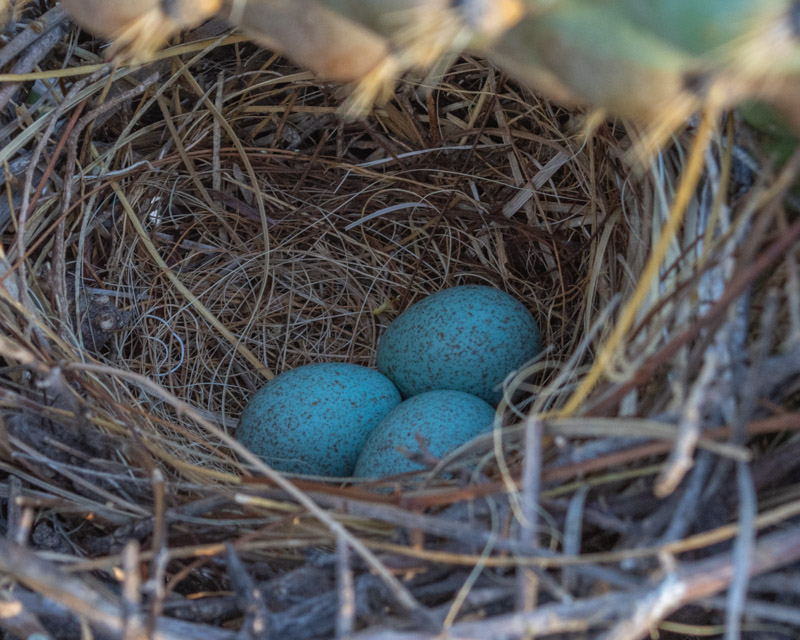By Dan Weisz
These photos were taken all over the Tucson area but each subject represents something that lives in our rich Foothills environment. If you look our your window, you just may see similar wildlife.
An Anna’s Hummingbird sits on her eggs at Tohono Chul Park. Her beak is thickly covered with pollen, perhaps from nearby chuparosa flowers that were blooming.
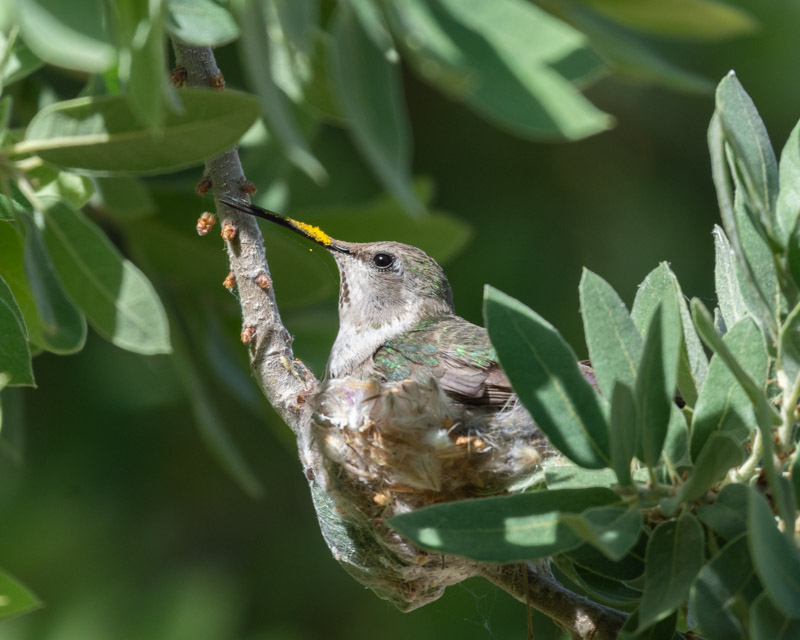
Also at Tohono Chul Park, a long-nosed snake believes it is hiding. A Docent identified the snake for me. More at https://tucsonherpsociety.org/inhabitants/long-nosed-snake/
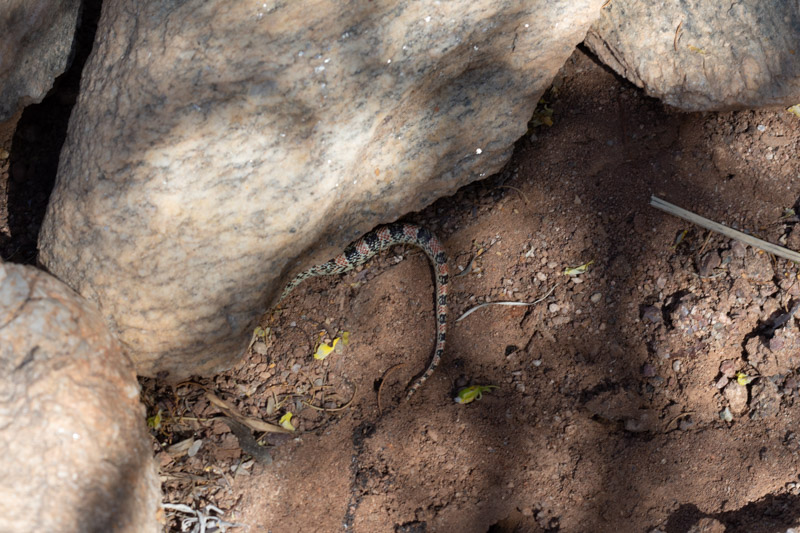
Gila Woodpeckers at Agua Caliente Park were busy feeding young in a Saguaro Nest. Gilas are the culprits who create most of the holes in the Saguaro cacti (along with Gilded Flickers). A large number of birds make their homes in the vacated holes (boots) of saguaros.
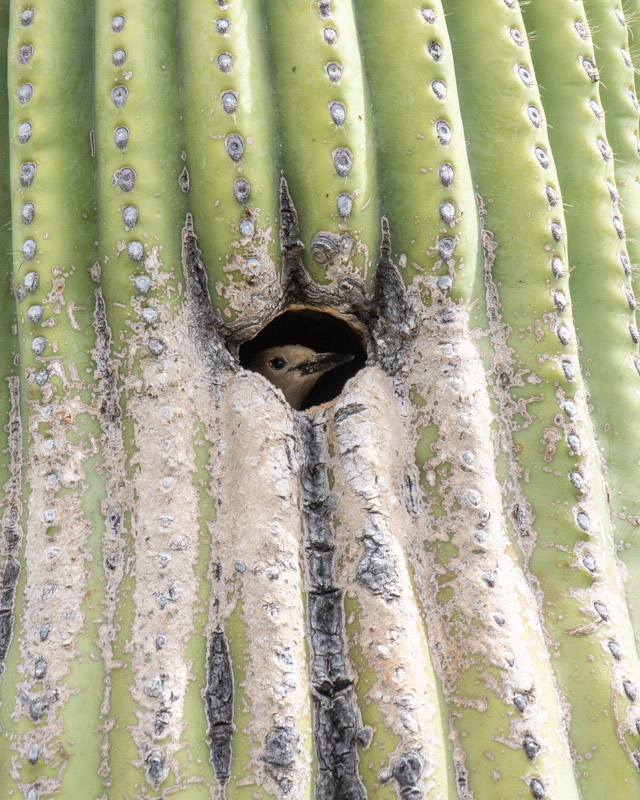
Mom has to wait for Dad to exit the nest before she heads in with an insect.
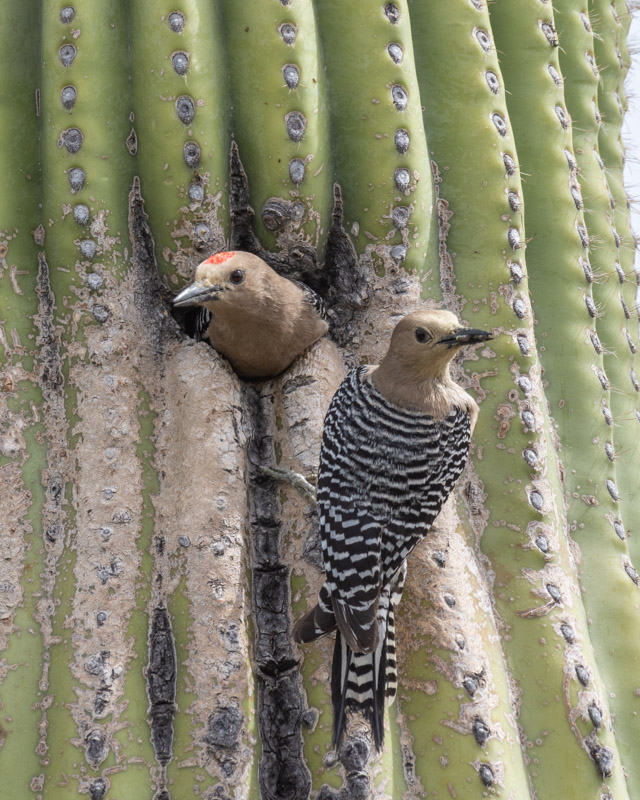
I think this may be one of the young in the nest but it may also be the female exiting.
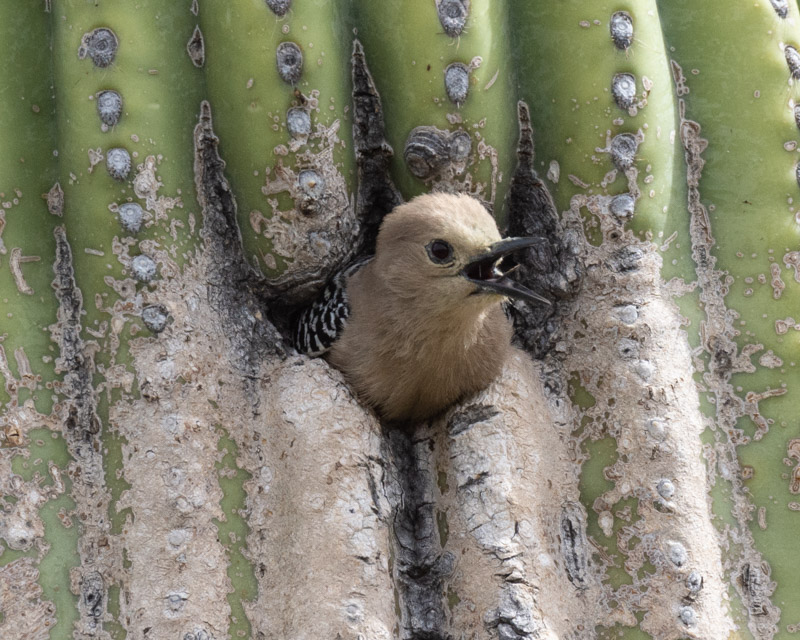
Those of us who live in the area know that Gambel’s Quail will nest just about anywhere. Still, I laughed when I saw this egg on the car one morning. Was it an accident? Did the female intend to return each day, adding eggs to the new nest-site? I’m not sure why this happened, but we didn’t move the car for a few days and no more eggs were left in that spot. (Note to readers: this is not April First!)
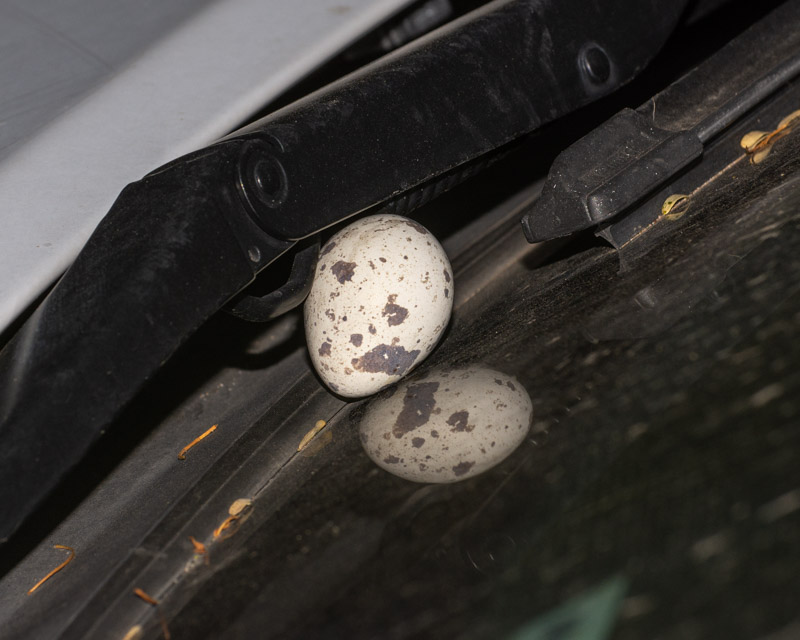
The White-tailed Doe returned to my yard one afternoon while I was in the kitchen. She remained there for over a half hour, browsing on a variety of fresh leaves and flowers. I took photos through an open window and even quietly opened the patio door and stepped out in order to have better viewing spots. The doe was aware of me but did not show fear, continuing to alertly feed while I watched.
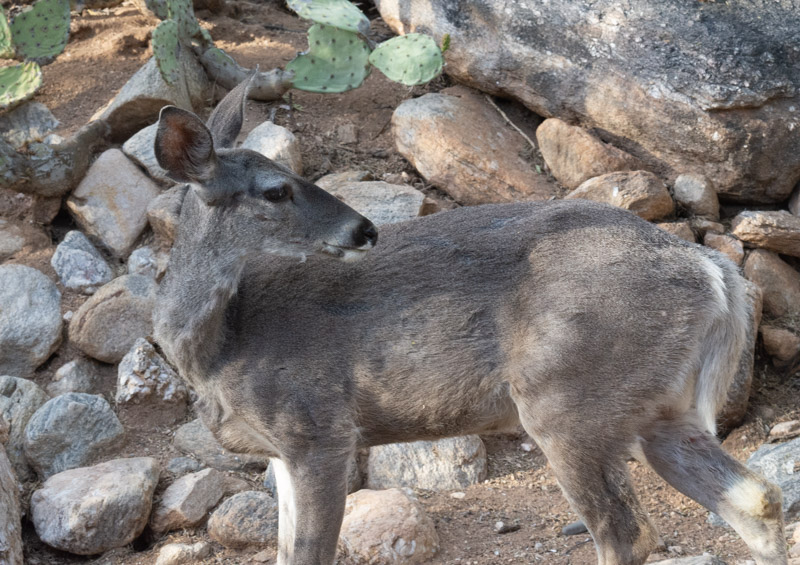
A Vermilion Flycatcher with its wings spread due to the heat,
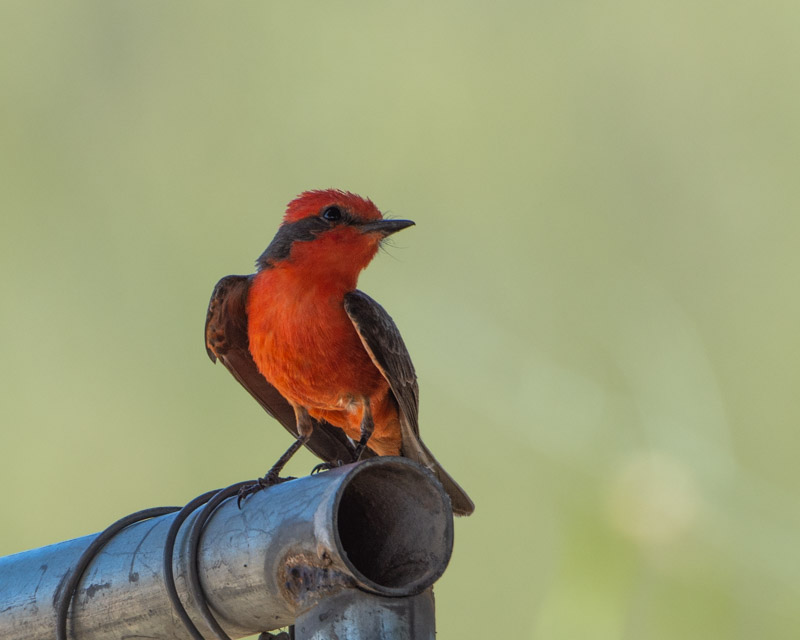
and continuing to make its rounds finding insects in the area.
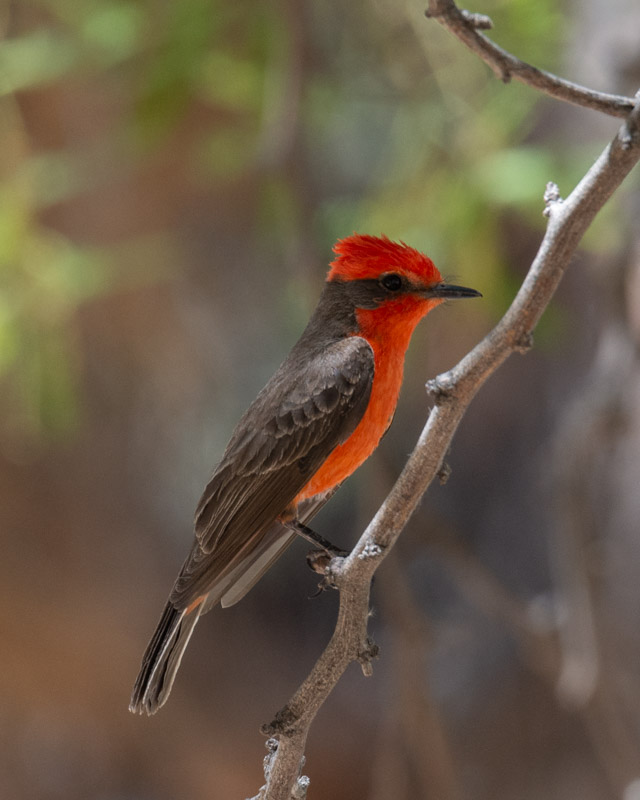
Curve-billed thrashers build their nests most often in cholla cactus and the nests are shaded by the cactus branches above. Twigs are used to form the outer portion of the cup the nest looks like a large jumble.
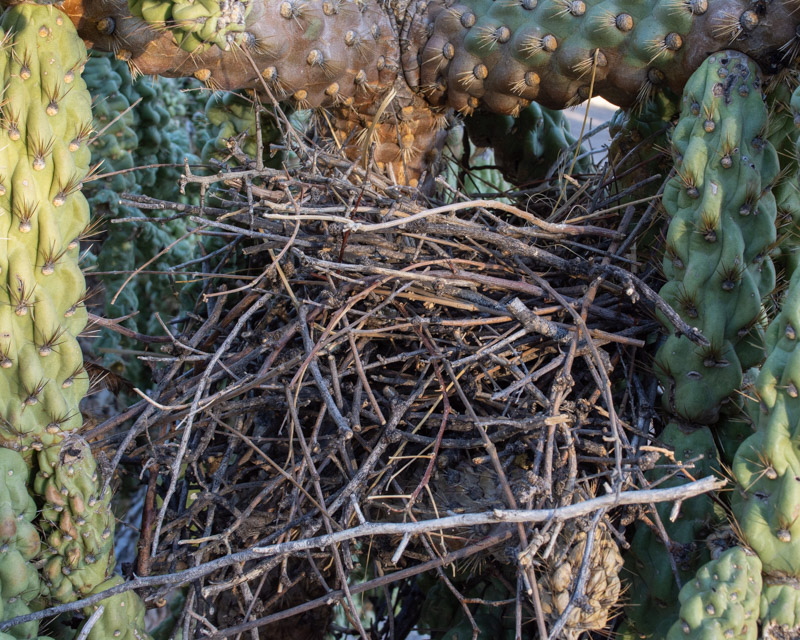
Compared to the “outer cup”, the inside of the nest is very smooth. The male brings grasses to the female who lines the nest before laying her beautiful blue/green eggs. This nest is in my neighborhood in the Foothills Clusters.
